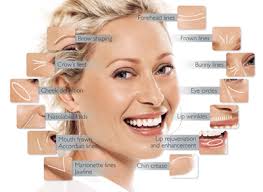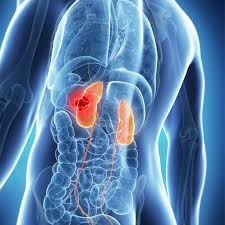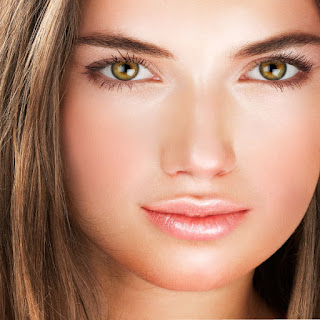What is Cosmetic Surgery?
Cosmetic surgery is also known as plastic surgery or aesthetic surgery. It is actually a blanket term used to describe a number of surgical procedures that are performed to either improve your appearance or to correct the form of your body after any kind of disfiguration.
There are different types of cosmetic surgeries, such as:
- Reconstructive surgery
- Craniofacial surgery
- Hand surgery
- Microsurgery
What are the techniques and procedures used in Cosmetic Surgery?
There are a wide range of techniques and procedures that are used to perform the different types of cosmetic surgeries.
Skin Grafting surgery
The most common type of technique used in skin grafting. These skin grafts can be harvested from various sources, such as:
- Autografts- These are skin grafts that are harvested from the patient’s own body. In case sufficient amount of tissues cannot be harvested directly from the patient the doctors use cultured sheets of epithelial cells or synthetic compounds such as ‘integra’ that is made from silicone and bovine tendon collagen.
- Allografts- These are skin grafts that are harvested from either a living donor or from a cadaver.
- Xenografts- These kinds of skin grafts are harvested from a donor of different species.
Reconstructive surgery
This surgery is used to correct functional abnormalities that are caused due to burns, severe injuries, physical congenital disorders, developmental abnormalities, disease, infection, cancer and tumors. Mostly a reconstructive surgery is used to increase functionality however it is at times used as a cosmetic procedure to improve your appearance.
Reconstructive surgery is generally performed to correct physical abnormalities caused by a facial bone break or fracture, cleft lips and cleft palates, etc.
Tumor removal, scar repair, laceration repair, breast reduction plasty and hand surgery are the most common forms of reconstructive surgeries.
Reconstructive surgery involves the surgeon to use microsurgery to harvest tissue and transfer it to recipient site to cover the defects when there is no availability of local tissue. The surgeon may remove flaps of skin, bone, muscle and fat as required for the surgical procedure and use these to reconnect to the blood supply by stitching arteries and veins that are very minute in size.
Cosmetic surgery
This is a purely aesthetic type of surgical procedure that is performed to improve a person’s appearance through alteration of the features as well as improving signs of aging.
These are the most commonly performed cosmetic surgeries:
- Abdominoplasty – Also known as ‘tummy tuck’ procedure it is used to reshape the tummy and make it more firm.
- Mammoplasty – This type contains several different aesthetic surgeries such as breast augmentation using breast implants to make the breasts appear more attractive, reduction mammoplasty is used to reduce the breast size in women with larger than normal breasts and mastopexy that is used to lift sagging breasts.
- Buttock augmentation – This is a surgery that uses artificial implants to make the buttocks more attractive through skin and fat grafting or tightening the buttocks through removal of excess skin.
- Lip enhancement – This surgery is used to surgically enhance the attractiveness of lips by making them seem fuller.
- Rhinoplasty – This cosmetic surgery is used to improve the appearance of the nose through reshaping it.
- Otoplasty – This surgery is used to reshape the ears.
- Brachioplasty – This cosmetic surgery is used to remove excess fat from between the underarm and the elbow.
- Laser resurfacing – Also known as ‘laser skin rejuvenation’ this surgery is used to decrease the depth of the skin pores.
- Liposuction – Liposuction surgery is used to remove the excess fat deposits from various parts of the body to give contour to the body.
What are the different types of Cosmetic surgery?
Aesthetic surgery
This is a purely cosmetic type of surgery and is used to improve the appearance of many body parts including the face. This surgery is also reflected in many reconstructive surgical procedures as well.
Burn surgery
This procedure is mostly performed in two separate phases. The ‘acute burn surgery’ is performed immediately after suffering from burn injuries while the ‘reconstructive burn surgery’ is performed after the burn injuries have healed.
Craniofacial surgery
This is sub-divided into pediatric and adult craniofacial surgeries. The pediatric craniofacial surgery mostly includes treatment for congenital abnormalities in the skeletal structure of the face as well as its soft tissues such as skin, muscles and other tissues. Examples of pediatric craniofacial surgeries include cleft lip and cleft palate correction surgeries along with pediatric fractures. Adult craniofacial surgeries are used to treat fractures and perform reconstructive procedures.
Hand surgery
This type of surgery deals with chronic disorders or acute injuries to the hand and wrist as well as birth defects of the hands and other peripheral nerve issues such as carpal tunnel syndrome and brachial plexus injuries.
Microsurgery
This type of surgery mainly deals with reconstruction of missing tissues through transferring a piece of tissue from a donor site and connecting the blood vessels again to the donated tissue. The head and neck reconstruction surgery is the most common example of microsurgery.
Cosmetic surgery in Goa for abroad patients looking for low cost treatment
Goa is known for its vast network of cosmetic specialty hospitals and clinics along with being the chosen destination for winter vacations. The cosmetic clinics and hospitals in Goa have the most modern and latest cosmetic surgery instruments and maintain global-standards of quality regarding treatment and hospitality. Goa sees thousands of abroad patients who come here for cosmetic treatments at a low cost every year.











































